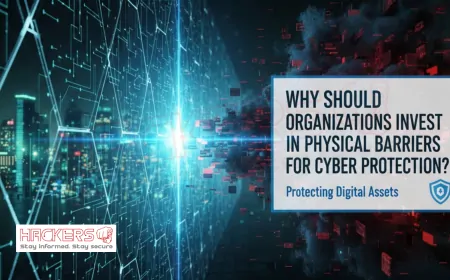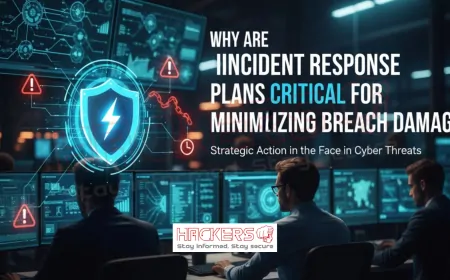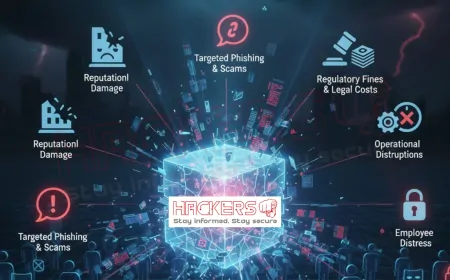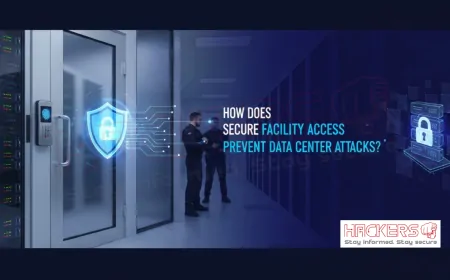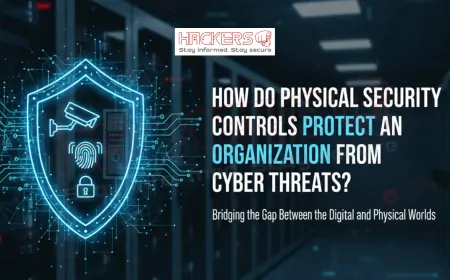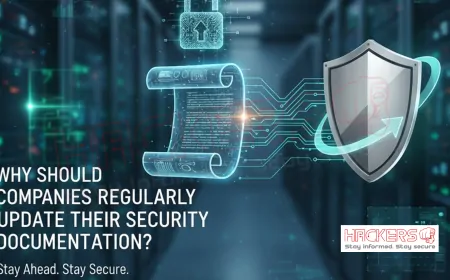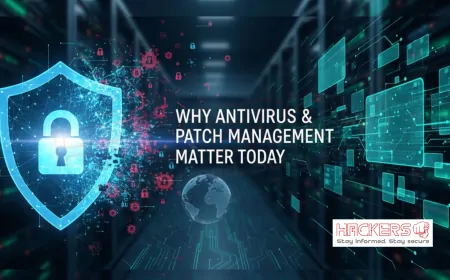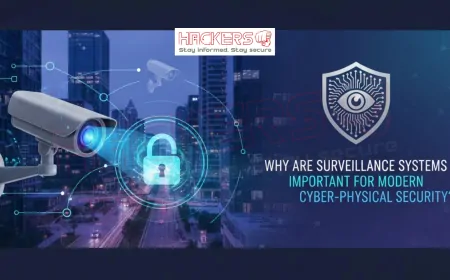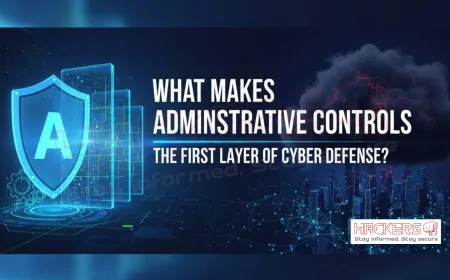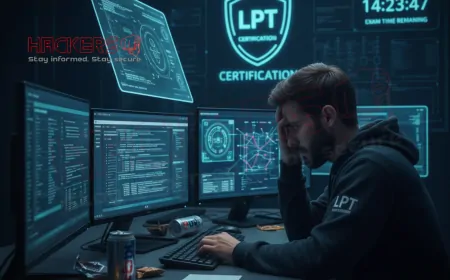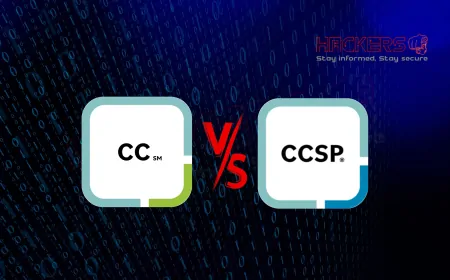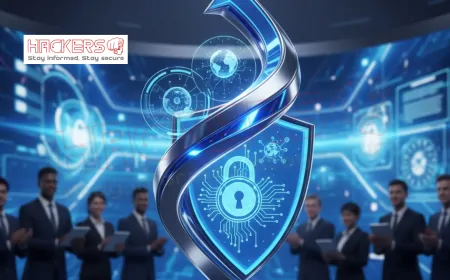Why Does Leadership Play a Critical Role in Cyber Defense?
Picture this: a company spends millions on the latest firewalls, hires top security experts, and installs advanced threat detection tools. Yet, one morning, the CEO receives an urgent call. Hackers have locked critical systems, customer data is gone, and the business grinds to a halt. How did this happen? The tools were in place. The team was skilled. But leadership failed to connect the dots. Cybersecurity is no longer just a technology problem. It is a business risk that sits at the very top of the organizational chart. Leaders set the tone, allocate resources, and shape culture. When they treat cyber defense as an afterthought, even the best systems crumble. This blog explores why leadership is the backbone of strong cyber defense. We will look at real failures, practical steps, and proven strategies that any leader can adopt, no matter the company size.

Table of Contents
- Introduction
- Reason 1: Leaders Control the Budget
- Reason 2: They Shape Company Culture
- Reason 3: They Make Risk-Based Decisions
- Reason 4: They Ensure Accountability
- Reason 5: They Drive Cross-Department Collaboration
- Reason 6: They Respond During Crises
- Reason 7: They Stay Informed and Educated
- Reason 8: They Set Long-Term Strategy
- Reason 9: They Influence Vendor and Partner Security
- Reason 10: They Build Customer and Stakeholder Trust
- Leadership Impact Comparison Table
- Conclusion
- Frequently Asked Questions
Let us begin with the most fundamental truth: cyber defense fails without leadership commitment. Here are ten reasons why leaders are the make-or-break factor in keeping an organization safe.
Reason 1: Leaders Control the Budget
Money talks. If cybersecurity gets only leftover funds, it stays weak. Leaders decide whether to invest in training, tools, or people. A 2024 Gartner report showed that companies with board-level security oversight spend 20% more effectively on defense. They avoid wasteful purchases and focus on high-impact areas.
Without budget support, IT teams patch holes with duct tape. Tools expire, staff burn out, and gaps widen. Leaders who approve proactive spending prevent costly breaches. For example, a mid-sized retailer invested $150,000 in employee training after a near-miss phishing attack. That decision saved them from a $2 million ransom demand six months later.
Tip for leaders: Treat security as operational expense, not optional. Allocate 7-10% of IT budget to defense, per industry benchmarks.
Reason 2: They Shape Company Culture
Culture is what people do when no one is watching. If leaders ignore security rules, employees follow suit. A CEO who bypasses multi-factor authentication sends a message: "Security is not important." Conversely, leaders who follow policies inspire compliance.
Culture drives behavior. Companies with strong security cultures see 70% fewer incidents, according to Stanford research. Leaders build this by rewarding safe actions, sharing success stories, and addressing violations fairly.
Real story: A bank CEO made phishing tests public and celebrated top performers. Click rates dropped from 30% to 3% in one year. Employees saw security as part of pride, not burden.
Reason 3: They Make Risk-Based Decisions
Not all risks are equal. Leaders prioritize. Should we encrypt laptops or segment networks first? They weigh cost, likelihood, and impact. This prevents over-spending on low threats while ignoring critical ones.
Cyber insurance now requires risk assessments signed by executives. Leaders who understand threats make smarter choices. They ask: "What keeps us up at night?" and align defenses accordingly.
Example: A manufacturing firm faced ransomware risks. Leadership chose backups and offline storage over fancy AI tools. When attacked, they restored in hours, not days.
Reason 4: They Ensure Accountability
Who owns security? Everyone, but someone must lead. Leaders assign clear roles: CISO reports to the board, department heads enforce policies, employees follow rules. Without accountability, tasks fall through cracks.
Accountability includes consequences. A gentle reminder after a policy breach teaches nothing. Leaders set fair but firm standards. They also recognize effort to keep morale high.
Case in point: After a data leak, a tech company tied bonuses to security metrics. Incident reports dropped 50% as teams took ownership.
Reason 5: They Drive Cross-Department Collaboration
Security is not just IT. HR manages access, legal handles compliance, finance approves tools. Silos kill defense. Leaders break barriers by forming security committees with representatives from all units.
Collaboration catches blind spots. Marketing might launch a campaign needing secure links. IT flags risks early. Leaders facilitate these conversations.
Success story: A hospital formed a cyber council. Nurses reported phishing attempts faster, preventing patient data leaks.
Reason 6: They Respond During Crises
Breaches happen. Speed matters. Leaders activate response plans, communicate clearly, and make tough calls. Do we pay ransom? Shut down systems? Notify customers?
Poor leadership prolongs damage. The 2021 Colonial Pipeline attack worsened because decisions lagged. Strong leaders rehearse scenarios and empower teams.
Lesson: Practice tabletop exercises quarterly. Leaders participate to show seriousness.
Reason 7: They Stay Informed and Educated
Cyber threats evolve daily. Leaders do not need to code, but they must grasp basics: phishing, ransomware, zero-days. Informed leaders ask better questions and spot red flags.
Education comes from briefings, conferences, and simulations. Many boards now require annual cyber training for directors.
Example: A Fortune 500 CEO attended a hacker demo. Shocked by ease of breach, he doubled the security budget.
Reason 8: They Set Long-Term Strategy
Security is a journey, not a destination. Leaders plan for three to five years: cloud migration, AI adoption, remote work. Short-term fixes fail against evolving threats.
Strategy includes resilience. Can we operate during an attack? Leaders invest in redundancy and recovery.
Forward-thinking move: A logistics firm built a "security by design" policy. All new projects include defense from day one.
Reason 9: They Influence Vendor and Partner Security
Your chain is only as strong as its weakest link. Leaders demand security standards from suppliers. Contracts include audit rights and breach notification clauses.
The 2020 SolarWinds breach spread through trusted software. Companies with strong vendor oversight contained damage faster.
Action step: Review third-party risks annually. Leaders sign off on critical partners.
Reason 10: They Build Customer and Stakeholder Trust
Trust is currency. A breach erodes it fast. Leaders who prioritize security reassure clients, investors, and regulators. Transparent communication during incidents retains loyalty.
Customers choose secure brands. A 2024 survey showed 85% would switch providers after a major breach.
Brand win: A fintech firm disclosed a minor incident quickly and offered free credit monitoring. Customer retention rose due to honesty.
Leadership Impact Comparison Table
| Leadership Action | Direct Benefit | Estimated Cost | Time to Impact | Example Outcome |
|---|---|---|---|---|
| Approve Dedicated Budget | Tools, training, staff | $50,000 - $500,000/year | 3-6 months | Reduced breach likelihood by 40% |
| Model Security Behavior | Cultural compliance | Minimal | Immediate | Phishing clicks down 70% |
| Prioritize Risks | Focused spending | $10,000 (assessment) | 1-3 months | Avoided $2M ransom |
| Assign Accountability | Clear ownership | $5,000 (tracking tools) | 1 month | 50% fewer incidents |
| Form Cross-Function Team | Holistic defense | Time investment | 2-4 months | Caught risks early |
| Lead Crisis Response | Faster recovery | $20,000 (planning) | Ongoing | Minimized downtime |
| Pursue Ongoing Education | Informed decisions | $3,000/year | Continuous | Doubled budget wisely |
| Develop Long-Term Plan | Future-proofing | $15,000 (consulting) | 6-12 months | Security by design |
| Enforce Vendor Standards | Supply chain safety | $10,000 (audits) | 3 months | Contained third-party breach |
| Communicate Transparently | Retained trust | PR support | During incident | Higher customer loyalty |
This table shows that leadership actions vary in cost and speed but deliver outsized returns. Even low-budget moves like modeling behavior create immediate wins.
Let us expand on these ideas. Budget is not just about spending more. It is about spending smart. Leaders who understand return on investment push for metrics: How many incidents did we prevent? What is the cost per employee of training versus a breach?
Culture building starts small. Send a monthly security tip from the CEO's desk. Recognize teams with zero phishing clicks. Make security part of performance reviews. Over time, it becomes habit.
Risk decisions require data. Leaders demand dashboards showing threat trends, patch status, and training completion. They meet quarterly with the CISO to review.
Accountability works both ways. Praise publicly, correct privately. Tie goals to security outcomes without punishing honest mistakes.
Collaboration needs structure. Schedule monthly security syncs. Invite legal, HR, and operations. Rotate topics: password policy, vendor reviews, incident lessons.
Crisis leadership is about clarity. Pre-define communication channels. Have templates for customer notices. Practice with realistic scenarios, including ransomware and data leaks.
Education is ongoing. Subscribe to threat intelligence briefs. Attend one cyber conference yearly. Bring back one actionable idea.
Strategy aligns with business goals. Expanding to new markets? Plan security for that region. Adopting AI? Assess data risks. Think three moves ahead.
Vendor management starts with inventory. Know who has access. Classify by risk: high, medium, low. Audit high-risk annually.
Trust building extends to regulators. Report incidents promptly. Show proactive steps. It reduces fines and scrutiny.
Small businesses benefit too. A local clinic's owner took a free online cyber course. She implemented password managers and backups. When ransomware hit a peer, her practice stayed open.
Emerging trends demand leadership attention. AI deepfakes trick employees. Supply chain attacks rise. Remote work expands attack surfaces. Leaders who ignore these fall behind.
Compliance is table stakes. GDPR, CCPA, and India's DPDP Act require executive oversight. Fines hit millions. Leaders who embed compliance in operations avoid penalties.
Board involvement matters. In 2025, over 60% of public companies have a board member with cyber expertise, per Deloitte. Private firms follow suit.
Measurement proves value. Track mean time to detect and respond. Aim to lower both. Celebrate improvements.
Employee feedback helps. Anonymous surveys reveal policy pain points. Adjust without weakening defense.
Partnerships amplify reach. Join industry groups to share threat intelligence. Leaders attend to build networks.
Success stories inspire. Share internally and externally. "We stopped an attack because of your vigilance." It motivates.
Failure teaches too. Conduct blameless post-mortems. What did leadership miss? Fix processes, not people.
Technology enables, but humans decide. Leaders who grasp this truth build resilient organizations.
Conclusion
Leadership is the heartbeat of cyber defense. From budget to culture, risk to crisis response, leaders hold the keys to safety. The table and examples prove that committed leaders prevent breaches, save money, and earn trust. Cybersecurity is not a department. It is a mindset shaped at the top.
Start now. Schedule a security briefing. Form a cross-function team. Model the behavior you expect. One decision today prevents disaster tomorrow. Strong leadership does not eliminate threats, but it ensures your organization survives and thrives through them. The digital world is risky, but with vigilant leaders, it is navigable.
Frequently Asked Questions
Why can't IT handle cybersecurity alone?
IT implements tools, but leadership provides budget, culture, and strategy. Without executive support, efforts lack impact and sustainability.
How much should a company spend on cybersecurity?
Benchmark 7-10% of IT budget. Small firms start with $5,000-$10,000 yearly on essentials: training, MFA, backups.
What is a CISO and does every company need one?
Chief Information Security Officer. Large firms need one. Small ones designate a lead or outsource the role.
How do leaders build a security culture?
Model behavior, communicate regularly, reward compliance, and make training engaging and mandatory.
What is the biggest risk of poor leadership in cyber defense?
Complacency. Leaders who downplay threats leave doors open for attacks that cripple operations.
Should CEOs learn technical details?
Not deeply, but understand basics: phishing, ransomware, encryption. It informs better decisions.
How often should leaders review security?
Quarterly at minimum. Monthly dashboards for high-risk industries like finance or healthcare.
What role does the board play?
Oversight, budget approval, risk appetite setting. Many now have cyber committees.
Can small businesses afford strong cyber defense?
Yes. Free tools, policies, and leadership commitment go far. Focus on people and processes.
How to handle a breach as a leader?
Activate plan, communicate calmly, contain damage, notify stakeholders, learn and improve.
Why is vendor security a leadership issue?
Suppliers access your data. Leaders enforce standards through contracts and audits.
What metrics should leaders track?
Phishing test results, patch compliance, incident response time, training completion.
How to justify security spending to stakeholders?
Show breach costs: fines, downtime, lost trust. Compare to insurance premiums avoided.
Is cybersecurity a one-time investment?
No. Threats evolve. Budget for ongoing training, updates, and strategy refresh.
How to educate the leadership team?
Short monthly briefings, annual workshops, simulated attacks, and industry reports.
What is "security by design"?
Building defense into every project from the start, not as an afterthought.
Why do breaches still happen to prepared companies?
New threats emerge. Even strong defense needs constant leadership vigilance.
How to motivate employees on security?
Make it relevant, reward safe behavior, share real stories, keep sessions short and practical.
What laws require leadership involvement?
GDPR, CCPA, DPDP Act in India. All mandate executive accountability for data protection.
How to start improving leadership in cyber defense today?
Schedule a 30-minute security briefing. Ask: "What is our biggest risk?" Act on one finding.
What's Your Reaction?




























